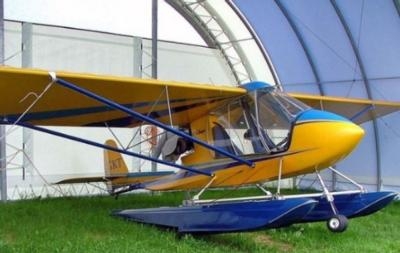Pilot Was Fatally Injured When Wing Strut Failed
The Canadian Transportation Safety Board (TSB) has released its final report from an accident which occurred July 30 which fatally injured the pilot of a Quad City Ultralight Aircraft Corporation (Quad City) Challenger II advanced ultralight aircraft equipped with amphibious floats.

According to the report, the aircraft was one of two which departed Ottawa/Rockcliffe Airport (CYRO), Ontario, for a daytime visual flight rules cross-country flight to North Bay Airport (CYYB), Ontario. While en route, the 2 aircraft encountered strong winds and turbulence, and the pilots decided to land on the Ottawa River, near Mattawa, Ontario. During the landing, the occurrence aircraft (registration C-IGKT, serial number CH2-1199-1919) touched down hard. After a short lunch break, the pilots inspected the 2 aircraft and then flew to CYYB without further incident.
On 30 July 2018, the 2 aircraft departed CYYB at 0932 and climbed to between 1800 and 2000 feet above sea level for the return flight to CYRO. At approximately 0950, the occurrence aircraft's right wing separated from the aircraft when it was over Talon Lake, Ontario, 14.3 nautical miles east of CYYB. The aircraft entered an uncontrolled descent and collided with terrain in a wooded area. A post-impact fire ensued. The pilot was fatally injured. The aircraft was destroyed by impact forces and the post-impact fire.
The pilot of the other aircraft overflew the occurrence site and landed on Talon Lake. At 0959, he met a local resident, who called 911 to report the accident. There was no emergency locator transmitter on board, and none was required by regulations.
Records indicate that the pilot was certified and qualified for the flight in accordance with existing regulations. He obtained a private pilot licence – aeroplane in December 2004 and had a valid Category 3 medical certificate. He had accumulated over 1330 total flying hours, with over 1230 hours on ultralights. The investigation found no evidence to indicate that the pilot's performance was degraded by fatigue or other physiological issues.
The occurrence aircraft was manufactured and registered as an advanced ultralight in 2000. The occurrence pilot purchased the aircraft in May 2008. It was a 2-seat, long-wing variant with a 29.5?foot wingspan. Depending on the season, the aircraft was flown on wheels, skis, or amphibious floats. At the time of the occurrence, the aircraft was equipped with amphibious floats. The aircraft was also equipped with a heavy load saddle kit. The heavy load saddle kit was developed to provide the Light Sport version of the Challenger ultralight aircraft with greater lift and performance capabilities. It is a set of 2 spacers fitted to the fuselage longeron and provides a flat surface area at the attachment point with the bracket .
The examination of the aircraft concluded that the bracket that attached the right forward strut to the heavy load saddle on the fuselage had failed under nominal loading condition due to the presence of a large fatigue crack. The fatigue crack, which accounted for at least 60% of the cross-section of the base of the bracket, had been present in the bracket for some time before this occurrence. The secondary delamination cracks that were found in the bracket are considered abnormal for aluminum alloy.
The failure of this bracket allowed the lift strut to detach from the fuselage and the right front spar to twist and rotate upward under aerodynamic load. The right front spar tore away at the bracket attachment point to the main center beam and caused the wing to fail. Meanwhile, because the right-wing lift forces were no longer being transferred to the fuselage, the lift forces generated by the left wing caused the aircraft to roll to the right. As the right wing continued to fold back, the rear spar and rear lift strut failed, and the wing separated from the aircraft. This right wing separation resulted in an unrecoverable loss of control and collision with terrain.
It was determined that the fatigue crack on the right front lift strut bracket went undetected during the routine inspection cycle undertaken by the pilot and failed before the 500-hour stipulated life span. Although a bolt longer than specified had been used to attach the bracket to the lift strut, there was no evidence to indicate that the bolt had been overtightened or over-torqued. It could not be determined whether the hard landing the day before the accident contributed to the bracket failure.
(Source: Canadian TSB report. Image of accident aircraft provided)
 ANN's Daily Aero-Term (04.20.24): Light Gun
ANN's Daily Aero-Term (04.20.24): Light Gun Aero-News: Quote of the Day (04.20.24)
Aero-News: Quote of the Day (04.20.24) ANN's Daily Aero-Linx (04.21.24)
ANN's Daily Aero-Linx (04.21.24) Aero-News: Quote of the Day (04.21.24)
Aero-News: Quote of the Day (04.21.24) ANN's Daily Aero-Term (04.21.24): Aircraft Conflict
ANN's Daily Aero-Term (04.21.24): Aircraft Conflict



